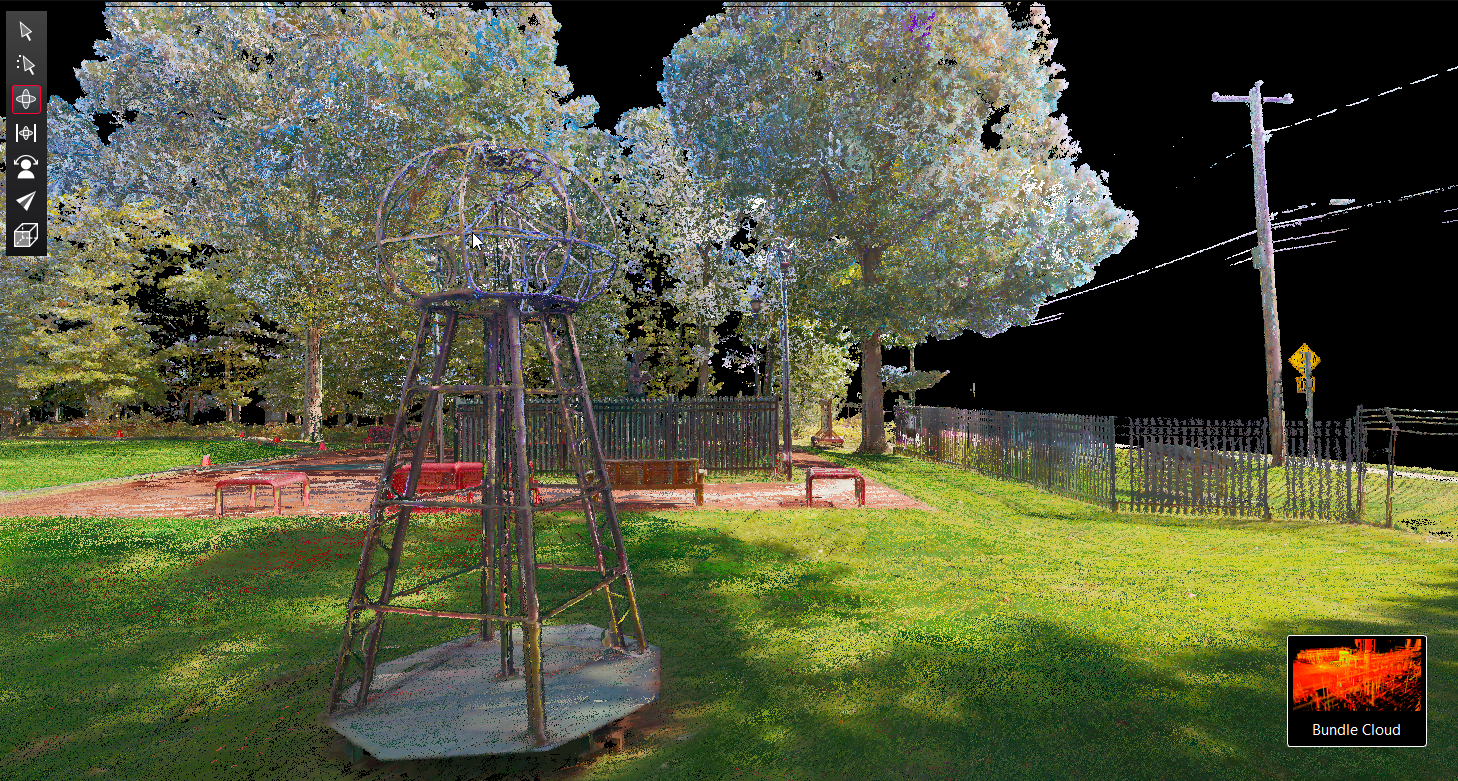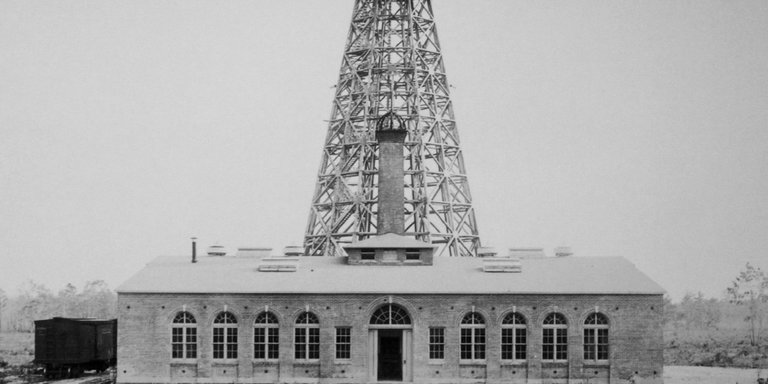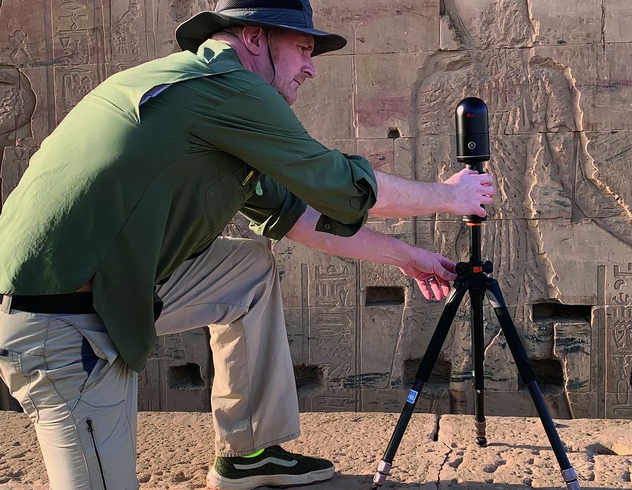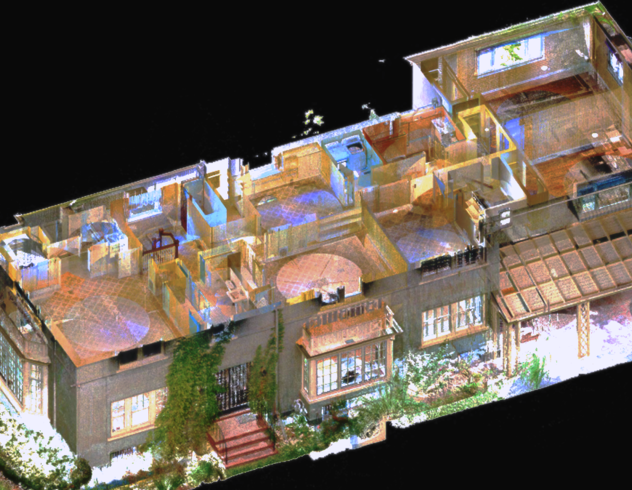Leica BLK helps preserve the legacy of a pioneering inventor and his last remaining laboratory.
In a sleepy village on the Eastern end of Long Island, around 70 miles from New York City, is the last standing laboratory of inventor Nikola Tesla.
Today, thanks to a certain car company, the name Tesla has a foothold in popular consciousness. But for much of the late 20th and early 21st century, the famed Serbian-American’s legacy had largely faded from history, despite his inventions helping create the power distribution and wireless radio systems that touch nearly every aspect of modern life.
Such was Tesla’s lack of notoriety that the laboratory was nearly slated for demolition in 2012 until a heroic (and then record-breaking) crowd-funding effort raised nearly $1.4 million in six weeks from more than 33,000 donors to purchase the lab and grounds and set the stage for its transformation into a living, breathing place to honor the inventor’s achievements and inspire a new generation of thinkers, inventors, and entrepreneurs.
“That crowd of donors was full of folks from the innovation community globally,” said Marc Alessi, Executive Director of the Tesla Science Center at Wardenclyffe (TSCW). “That's what makes this center special. The history of Tesla, the way the world saved it, and the folks interested in innovation coming together at this spot.”
A delicate demolition and ambitious renovation
That interest in innovation and exploring new technologies is part of what drove the Tesla Science Center team to reach out to Leica Geosystems, part of Hexagon, to see about a partnership between the two organizations to scan the site for the development of digital assets and to track different phases of the site’s renewal.
Having cleaned and cleared the grounds in the decade since securing the site —and landing a spot on the National Register of Historic Places – the team was about to embark on one of the first major construction phases in the journey to turning Tesla’s laboratory into a functional museum and science center: The delicate demolition of more than 100,000 square feet of defunct photo processing factory that was attached, barnacle-like, to the Tesla’s more than a century-old brick laboratory.
That meant getting a digital twin of the site with the new Leica BLK360 was a key piece of preserving some of the architectural data of the area before demolition crews began dismantling parts of the newer building that are structurally attached to Tesla’s lab.
But taking time and being careful with the site and its preservation is more important than moving quickly on the project, Jane Alcorn, a board member and one of the founders of the Tesla Science Center project, told Leica Geosystems.
“And we've been really interested in maintaining the integrity of the building and the grounds, and also of Tesla's legacy. We have a historic site designed by Stanford White, one of the preeminent architects of the time, and we have, I think, an obligation to all of the people who helped to support us that we do it right,” Alcorn said. “It’s been a journey, getting permissions, doing cleanups, doing surveys, and having assessments done. We don't have any original blueprints. So, we've had to do a reverse blueprint, in a way.”
Scanning the site
With 68,000 square feet of grounds at a site that’s not quite ready for the public, scanning could have been challenging. But the day was sunny and clear, and with the work the TSCW team and volunteers had put into clearing and manicuring the grounds over the years, there were plenty of clean lines of sight to both the architecture and main points of interest. The BLK360 was more than up to the task, and scans were collected at the highest possible density and imagery settings (Dense+, High Dynamic Range imagery).
After a partial site inspection of the interior, the Leica Geosystems team decided to defer grabbing interior scans due to safety concerns and the significant renovation and remediation required to capture an accurate floorplan and 3D model of the original building. The Tesla team agreed that would be a better goal for further along in the project.

A global science center — at home and in the metaverse
While demolition is just getting underway, the end product — the renovation of Tesla’s original lab and the construction of a science and learning center on the site — is still years (and several million dollars in funding) away.
In the meantime, however, the center is beginning construction on its virtual Tesla Science Center, which was always part of the team’s roadmap but has gained more poignancy after two years of the COVID-19 pandemic.
“When COVID hit, we started testing out what our future vision is in terms of some virtual programming. And we had 48 programs throughout COVID that brought students from 37 states and 26 different countries,” Alessi said.
That made the team even more committed not to just providing consistent virtual programming but a place for the Tesla Science Center permanently online, in some version of the metaverse.
“We always envisioned having a strong virtual aspect because we believe 50 percent of what we do on-site should be virtual,” Alessi said. “There are three reasons for that. First, Tesla was a global figure. Number two, the world helped save this place, and we know that not everybody's going to get to New York immediately. And three, we're starting a science center in 2022 with a different technological outlook. As we talk to folks in the industry, it makes a whole lot of sense for us not to build a Crystal Palace again out here on Long Island on the North Fork but to do the best that we can to engage folks in the virtual realm.”
As Tesla Science Center’s teams build out the assets for their metaverse interpretation of the site, the BLK360’s digital twin of the science center building, and grounds help form an accurate reference to the 3D model.
“The first step to that is to build the map,” said Douglas Borge, COO of TSCW.
We're going into capital construction, so there'll be a physical space, and there'll be a virtual space, but each of them will be unique in itself where the intent is to teach something different.
“Our goal right now we're looking at is about two years total. And that two years would be comprised of building the map and building all the assets to have a virtual museum space.”
Creating a space that’s not just a museum but a living science center is near and dear to Alcorn, who began her efforts to preserve the location and introduce regular STEAM programming into local schools in the 1980s.
“Our goal was science education for children and eventually families. That was the idea,” she explained. “But then, as we learned more about Tesla and what he was doing and had tried to do, we were hooked and said we had not just the Learning Center to create but a memorial and a living museum that would be honoring Tesla's memory, his legacy, and all the things that he had tried to do to better humanity. So, it was a much more encompassing vision than when we originally started.”
But the journey, Alcorn said, has been worth it.
“Through all of it, we're trying to do the right thing by Tesla, by the site, for the community, in the name of science, and in preserving history,” she explained. “It is a multifaceted, wonderful problem to have.”
“And it's not just the history: We also are looking to the future, which is what Tesla did. He was a futurist; everything he did was about the future. So, we're looking at what we do as creating the right foundation for the future. We don't want to just do it to do it — we want to do it right.”



